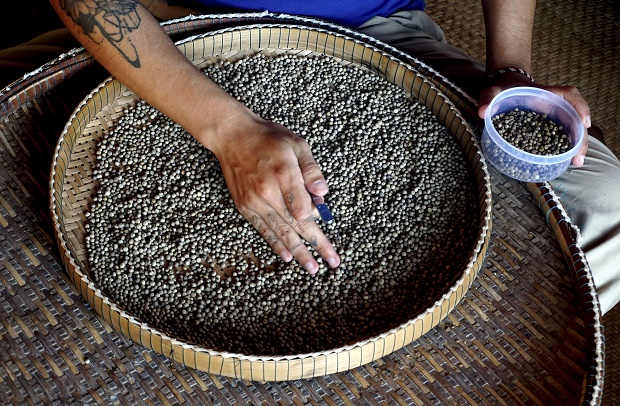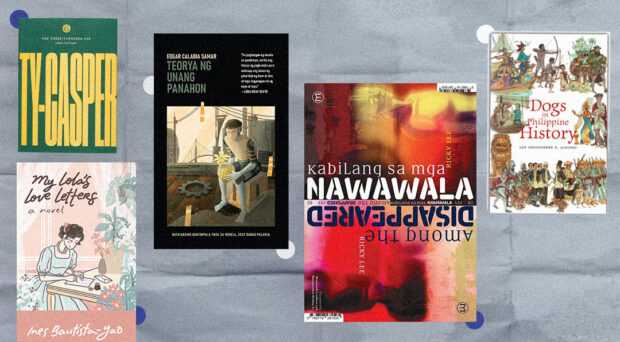
KAMPOT, Cambodia — A nearby sea, flanking mountains, a quartz-rich soil: It’s the perfect spot on earth, devotees say, to yield a product they describe in that rapturous vocabulary usually reserved for fine wines: “aristocratic, virile, almost aphrodisiacal,” with subtle notes of caramel, gingerbread and mild tobacco.
Celebrity chefs from Paris to Los Angeles swear by Kampot pepper, a southwestern Cambodian spice with a tragic past that is now reclaiming its global pre-eminence. It is also proving to be “black gold” for some of its once-impoverished farmers, thanks in part to Kampot pepper last year being awarded a Protected Geographical Indication by the European Union. This identifies unique products — like Stilton cheese, Champagne or Darjeeling tea — as originating in a very specific region.
So far Kampot pepper production is a mere dusting — just 70 tons last year. Vietnam, the world’s top pepper producer, churned out some 145,000 tons of the spice. But more plantations are springing up while Kampot quality is rated as high as ever and hitherto slack markets, like the United States, are getting hooked on the spice. A New York chef has even concocted a Kampot pepper ice cream while Michelin three-starred French chef Olivier Roellinger rhapsodizes about its “olfactory richness” and broad spectrum of flavors.
The spice’s EU designation “has permitted a renaissance of pepper in Kampot. … This not only recognizes the singularity of this pepper but helps protect it from imitations,” says Nathalie Chaboche, a Frenchwoman who with her Belgian husband, Guy Porre, owns La Plantation, where pepper plants entwine 20,000 posts on a rolling green landscape fronted by the Gulf of Thailand.
The couple, who started the enterprise four years ago after lucrative careers in the computer industry, aim to boost production from 6 tons last year to 50 tons in 2018. They intend to grow without weakening quality control or endangering Kampot’s status as a “premier cru,” a French term for wine and other produce signifying impeccable quality — and hefty price.
Kampot red pepper was recently selling in Germany for as much as 378 euro per kilogram ($185 per pound), compared to an average import price of about $8 for one kilo in Europe for Vietnamese pepper. The farm-gate price for the three pepper varieties — red, white and black — averages around $10 per pound.
Believed to have originated in southern India, pepper became a widely traded item across Asia and Europe. Pepper farming in Cambodia was first recorded by a Chinese traveler in the 13th century, and energized centuries later by French colonialists. By the early 1900s, annual production peaked at 8,000 tons.
War disrupted the industry and after their 1975 victory, the murderous Khmer Rouge turned farmers into slave laborers. Deeming the “king of spice” too decadent for their ultra-revolution, the regime left plantations to decay.
A Japanese aid worker, Hironobu Kurata, pioneered a revival in the mid-1990s, but the scars of the Khmer Rouge era took long to heal. As late as 2000, only 2 tons were grown annually, but now about 450 farms produce Kampot pepper. Most belong to the Kampot Pepper Promotion Association, which assists in price-setting and marketing while policing strict standards, including adherence to organic practices.
Cultivators use methods tested over 700 years, with some injecting new techniques.
Sorn Sothy, a former teacher and social worker, tries to reproduce the jungle environment native to the pepper plant on her small plantation. Palm leaves are used as shade; the soil is enriched with bat and cow manure mixed with bloodied animal bones. To ward off predatory insects, she sprays plants with a bitter extract from the leaves of neem trees.
The plantation run by Chaboche and Porre is Cambodia’s first semi-automated pepper operation, but its more than 100 employees still do much of the work by hand. “Our growing is traditional. The processing is modern,” says Porre.
Jean-Marie Brun, a French agricultural development expert, says the advent of large plantations could lower prices, and possibly quality. “The future will tell us if the large plantations are as successful as the smallholder farms,” he says.
Ngoun Lay, the association’s head and a fourth-generation pepper farmer, waxes bullish about the future despite potential problems and ongoing robust sales of fake Kampot pepper, mostly from Vietnam.
A recent report, he says, shows European demand for the brand at around 200 tons while production next year is expected at some 100. Farm gate prices have tripled over the past seven years, keeping once-poor farmers on the land rather than seeking menial work in neighboring Thailand.
Stephane Arrii, producer of the Marquis de Kampot label, worries that extensive deforestation has degraded the region’s soil. He says huge plantations on the still-fertile lands of northeast Cambodia could one day offer competition.
But will they match Kampot’s quality?
“As a Frenchman, I can attest that tasting Kampot pepper is like making love,” says Arrii. “Once you start, you can’t stop.”












































